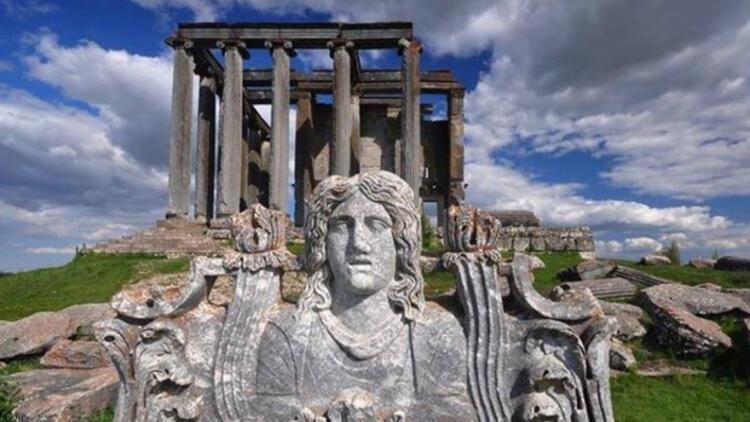
Archeologists on June 24 began restoration efforts of the ancient city of Aizanoi in present-day western Turkey.
Elif Özer, an archaeology professor at Pamukkale University, told Anadolu Agency that the team would focus on restoration works this year and already began at the 5,000-year-old site's theater and stadium.
Located just off the town of Çavdarhisar in Kütahya province, the site is also home to one of the best-preserved temples in Anatolia dedicated to the chief Olympian god Zeus of ancient Greek mythology.
Dubbed as the second Ephesus, another iconic ancient city in Turkey, the site was added to the UNESCO World Heritage Tentative List in 2012, with excavation efforts have been ongoing for the last nine years.
Özer said the Turkish Culture and Tourism Ministry along with a businessman in Kütahya, Rıza Güral, signed a sponsorship protocol for the restoration of 20,000 people capacity Roman theater and 13,500-people capacity ancient stadium.
"We began to work with the support of the governor of Kütahya. With the project set to last about six years, we aim to make this place look like it did in ancient times and attract more tourists to the region," she added.
The project architect, Yalın Pekvar, pointed out that natural disasters like earthquakes and landslides had damaged the ancient theater and stadium.
Located 57 kilometers (35 miles) from the Kütahya city center, the ancient site "experienced its golden age in the second and third centuries AD and became the center of the episcopacy in the Byzantine era," according to the
website of the Turkish Culture and Tourism Ministry.
Recent excavations around the Temple of Zeus indicate the existence of several levels of settlement in the city dating from as far back as 3000 BC. In 133 BC it was captured by the Roman Empire.
In 1824, European travelers rediscovered the ancient site. Between 1970 and 2011 German Archeology Institute conducted excavation work, unearthing the theater and a stadium, as well as two public baths, a gymnasium, five bridges, a trading building, necropolises and the sacred cave of Metre Steune- a cultist site thought to be used prior to the first century BC.
Since 2011, Turkish archeologists have been carrying out the work at the ancient site.